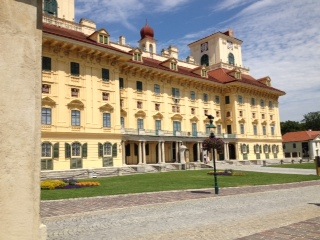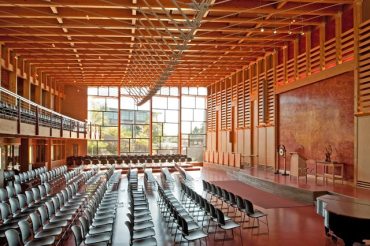The Well-Tempered Ear
Classical music Q&A: Trevor Stephenson discusses the similarities and differences of Mozart and Haydn, whose symphonies and concertos are featured in concerts by the Madison Bach Musicians this Saturday night and Sunday afternoon. Plus, violist Mikko Utevsky performs Bach and Shostakovich in a free recital on SATURDAY night.
2 Comments
CORRECTION: Early viewers of yesterday’s post read a mistake. I said that conductor-violist Mikko Utevsky’s FREE recital of J.S. Bach and Shostakovich at Capitol Lakes Retirement Home, 333 West Main Street, was tonight, Thursday night, at 7 p.m. — which is WRONG. The recital is on Saturday night at 7 p.m. I apologize for the error and fixed it as soon as I found out.
By Jacob Stockinger
This is exactly the kind of contrast programming that the Ear loves to hear and think there should be much more of.
Mozart and Haydn often get lumped together -– like Bach and Handel, Beethoven and Schubert, Chopin and Schumann, Brahms and Dvorak, Mahler and Bruckner, Ravel and Debussy, Prokofiev and Shostakovich and, in literature, like Camus and Sartre.
But for all the parallels and affinities they share, Haydn and Mozart are in reality very different composers and proponents of Classicism. Personally, I would sum it up by saying: “Haydn is more interesting but Mozart is more beautiful.”
Anyway, I was thrilled to hear that the founder, director and conductor Trevor Stephenson and the Madison Bach Musicians (below is a core membership) will perform a Mozart-Haydn concert this weekend.
Performances will be held in the crisp and acoustically lively Atrium Auditorium of the First Unitarian Society, 900 University Bay Drive, on Saturday night at 8 p.m. and Sunday afternoon at 3:30 p.m. Free pre-concert talks by Stephenson, who is a Master Explainer, will take place 45 minutes before the concerts.
The alternating symphony and concerto program includes Mozart’s Bassoon Concerto with UW bassoonist Marc Vallon, and the Symphony No. 29 in A; and Haydn’s “Symphony No. 45 “Farewell” and his Keyboard Concerto in D major with Stephenson as soloist. For more information, visit: http://www.madisonbachmusicians.org
Admission is $25 at the door, $20 for students and seniors over 65; or $29 and $15, respectively, if bought in advance at Orange Tree imports, Will Street Coop East and West, Farley’s House of Pianos. Ward-Brodt Music Mall and A Room of One’s Own. For ticket information, visit: http://www.madisonbachmusicians.org/tickets.html Cash and checks only are accepted; no credit cards.
Stephenson (below) recently discussed Mozart and Haydn in an email Q&A with The Ear:
Why did you decide on a Mozart-Haydn program for the Madison Bach Musicians’ spring concert?
First off, I really love their music! I think my earliest musical memories of childhood involve listening to LPs of Mozart’s symphonies (particularly the No. 38 in D major, the “Prague” Symphony) and dancing about the room for joy during favorite passages. I’m pretty sure I’m not alone in experiencing almost unbounded joy when listening to or playing Mozart (below top).
I always liked Haydn’s music immensely as well, and I find that as the years roll by I seek it out more and more. Particularly as I have become more experienced as a fortepianist and a harpsichordist, Haydn’s music takes on greater depth for me.
So, for MBM, I thought we’d try a concert featuring these two Classical period masters, and see what our baroque period training brings to the table for the music that comes right after the Baroque — the Classical. In a way, we’re trying to see what it feels like to walk into the Classical style through the front door, historically speaking. Instead of trying to approach it as old, what if it is seen as new?
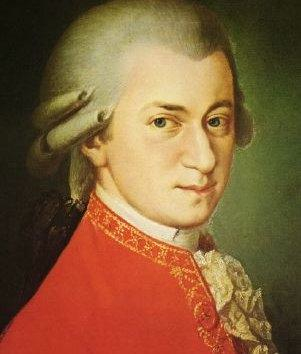
Mozart and Haydn are often mentioned together. Can you briefly describe their similarities with examples from your program? What are the major differences between the two Classical era composers, with references to your program? What is the historical or musicological importance of each?
Mozart and Haydn are the two great creative music forces in Europe during the second part of the 18th century. Interestingly enough, though, they both gave C.P.E. Bach a LOT of credit for forging the path to the new style of Classicism). CPE, of course, studied with his famous father, Johann Sebastian, but his writing is so strikingly different from his father’s.
Most notably, CPE is unabashed in using irregular phrase lengths (music that would turn most dancers into pretzels) and highly contrasting, even jarring, affective changes. He is very modern and avant-garde and his music is really Art with a capital A; the plumbing, as it were, is on the outside of the building—and there is no apology. But, it works! 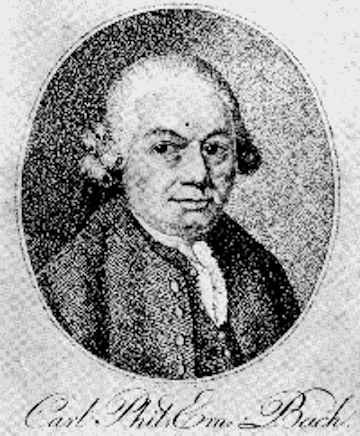
Haydn and Mozart both understood that CPE was the declaration of independence for the new style. Both Haydn and Mozart refined the CPE approach; that is, they employed but masked irregular phrase lengths, and, for contrasting emotions, Haydn and Mozart generally are more careful in making preparations, or they simply give the emotional shift more breathing room in the form.
Haydn (below) and Mozart differ from each other in that Haydn is generally more motivic (a technique which will really take off when Beethoven comes along), experimental, wry and folksy; while Mozart is more florid, expansive and just drop-dead gorgeous.
In many ways, Mozart reaches back to Handel (below) in his consummate sense for the theatrically cathartic moment—whether tragic or joyous. Mozart and Handel both know exactly how to make everyone in the hall cry with tragic empathy or leap for joy–as much as you can while staying in your seat. 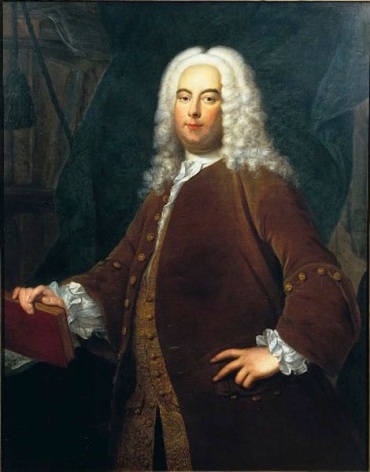
I think that Haydn’s blood brother really appears in the 20th century as Bela Bartok (below). With a rare combination of staggering intelligence and joyous honesty, both Haydn and Bartok assimilated and then morphed the folk music of their region (Austria-Hungary) into irresistible musical tableaux.
What would you like to say about the specific works and performers on your program? About the use of period instruments, especially the fortepiano, in the concerto?
On this program, we’ll playing two symphonies and two concertos — one of each from Mozart and Haydn. The orchestral core of all four works is strings, two oboes, and two horns.
The violins, violas, and cellos will be strung with gut and the players will use what are called transitional (or classical) bows. The gut strings are very supple — giving them a naturally sweet sound. Gut strings also speak quite quickly; that is, the moment the bow begins to move a very distinct pitch leaps (as it were) into the room.
The transitional bow is something of a hybrid between the baroque bow (which emphasizes clarity of articulation) and the later modern tourte bow (which emphasizes the strength and evenness of the sustaining style). For the Classical period music there is a premium on articulation (just as in the Baroque) but there is also a hint of the beginning of the chocolaty tone that would later begin to dominate string playing in the 20th century.
The 18th-century fortepiano (below) — which I’ll play in the Haydn Concerto in D Major — weighs in at around 150 pounds, has an entirely wooden frame, narrow gauge wire, and tiny leather-covered hammers. Like the 18th-century string instruments, it speaks very quickly and has tremendous contrast or changes in tonal character between its high and low registers. It is a little bi-polar in its remarkable ability to convey giddy effervescence at one moment and consuming darkness (particularly in the bass) the next. I always think of it as the musical equivalent of a Ferrari — incredible speed and (affective) maneuverability.
The internationally recognized bassoonist–and University of Wisconsin School of Music faculty member Marc Vallon (below, holding a modern and a Baroque bassoon in a photo by James Gill) will play the Mozart Bassoon Concerto on this concert; and we are thrilled that he has also agreed to conduct the entire program.
The classical bassoon he’ll be playing actually has a somewhat darker sound than its modern descendent, but like all 18th-century instruments the classical bassoon has a very quick and transparent attack, which facilitates articulations and intricate note groupings which are so important to the classical sensibility.
The classical bassoon also has a much richer low register than its modern counterpart, and correspondingly, the classical bassoon in its high register is more transparent (like a baritone singer in head voice) and less powerful than the modern. All of this in the hands of a master player like Marc will show new musical riches in this masterwork by Mozart.
Finally, I want to say a little bit about Haydn’s Symphony No. 45 in F-sharp minor, known as the “Farewell.” For most of his professional career, Haydn was music director at the Esterhazy court. He and the orchestra performed and lived (away from their families) at the Esterhazy palace (below is a photo by Bridget Fraser of the impressive estate’s facade) for long periods each musical season.
The story goes that in the fall of 1772, Prince Esterhazy had required the musicians to stay at court far longer than anyone had anticipated. To give the prince a subtle musical nudge that the players were very ready for the season to end, so that they could return to their families, Haydn structured the Finale (at bottom in a YouTube video) of this symphony so that the fiery presto suddenly gives way to a sweet, though other-worldly sounding adagio, at first in A major but then moving to the no-man’s-land of F-sharp major (a VERY odd key for the 18th century). The texture gradually thin outs, as one by one, each player finishes their line, blows out their candle, and quietly departs the stage— leaving only two violins in the final measures.
It is an amazing effect—a perfect exit strategy!
And for the concerts this weekend –in the wonderful acoustics of the Atrium auditorium (below, in a photo by Zane Williams) at First Unitarian Society — I think we’ll use Haydn’s petition just to ask for intermission.
How do you compare Haydn and Mozart?
Do you have favorite symphonies and concertos by each? What are they?
The Ear wants to hear.
Tags: Austria-Hungary, Bartok, Beethoven, Carl Philipp Emanuel Bach, Classical, Classical period (music), Claude Debussy, Franz Josef Haydn, George Frideric Handel, Handel, Haydn, Jacob Stockinger, Johann Sebastian Bach, Johannes Brahms, Maurice Ravel, Mozart, Mozart-Haydn, Ravel, Robert Schumann, Wolfgang Amadeus Mozart
- May 2024
- April 2024
- March 2024
- February 2024
- January 2024
- December 2023
- November 2023
- October 2023
- September 2023
- August 2023
- July 2023
- June 2023
- May 2023
- April 2023
- March 2023
- February 2023
- January 2023
- December 2022
- October 2022
- September 2022
- June 2022
- May 2022
- April 2022
- March 2022
- July 2021
- June 2021
- May 2021
- April 2021
- March 2021
- February 2021
- January 2021
- December 2020
- November 2020
- October 2020
- September 2020
- August 2020
- July 2020
- June 2020
- May 2020
- April 2020
- March 2020
- February 2020
- January 2020
- December 2019
- November 2019
- October 2019
- September 2019
- August 2019
- July 2019
- June 2019
- May 2019
- April 2019
- March 2019
- February 2019
- January 2019
- December 2018
- November 2018
- October 2018
- September 2018
- August 2018
- July 2018
- June 2018
- May 2018
- April 2018
- March 2018
- February 2018
- January 2018
- December 2017
- November 2017
- October 2017
- September 2017
- August 2017
- July 2017
- June 2017
- May 2017
- April 2017
- March 2017
- February 2017
- January 2017
- December 2016
- November 2016
- October 2016
- September 2016
- August 2016
- July 2016
- June 2016
- May 2016
- April 2016
- March 2016
- February 2016
- January 2016
- December 2015
- November 2015
- October 2015
- September 2015
- August 2015
- July 2015
- June 2015
- May 2015
- April 2015
- March 2015
- February 2015
- January 2015
- December 2014
- November 2014
- October 2014
- September 2014
- August 2014
- July 2014
- June 2014
- May 2014
- April 2014
- March 2014
- February 2014
- January 2014
- December 2013
- November 2013
- October 2013
- September 2013
- August 2013
- July 2013
- June 2013
- May 2013
- April 2013
- March 2013
- February 2013
- January 2013
- December 2012
- November 2012
- October 2012
- September 2012
- August 2012
- July 2012
- June 2012
- May 2012
- April 2012
- March 2012
- February 2012
- January 2012
- December 2011
- November 2011
- October 2011
- September 2011
- August 2011
- July 2011
- June 2011
- May 2011
- April 2011
- March 2011
- February 2011
- January 2011
- December 2010
- November 2010
- October 2010
- September 2010
- August 2010
- July 2010
- June 2010
- May 2010
- April 2010
- March 2010
- February 2010
- January 2010
- December 2009
- November 2009
- October 2009
- September 2009
- August 2009
Archives
- 2,491,398 hits
Blog Stats
Recent Comments
| Brian Jefferies on Classical music: A major reass… | |
| welltemperedear on What made Beethoven sick and… | |
| rlhess5d5b7e5dff on What made Beethoven sick and… | |
| welltemperedear on Beethoven’s Ninth turns 200… | |
| Robert Graebner on Beethoven’s Ninth turns 200… |
Tags
#BlogPost #BlogPosting #ChamberMusic #FacebookPost #FacebookPosting #MeadWitterSchoolofMusic #TheEar #UniversityofWisconsin-Madison #YouTubevideo Arts audience Bach Baroque Beethoven blog Cello Chamber music choral music Classical music Compact Disc composer Concert concerto conductor Early music Facebook forward Franz Schubert George Frideric Handel Jacob Stockinger Johannes Brahms Johann Sebastian Bach John DeMain like link Ludwig van Beethoven Madison Madison Opera Madison Symphony Orchestra Mead Witter School of Music Mozart Music New Music New York City NPR opera Orchestra Overture Center performer Pianist Piano post posting program share singer Sonata song soprano String quartet Student symphony tag The Ear United States University of Wisconsin-Madison School of Music University of Wisconsin–Madison Viola Violin vocal music Wisconsin Wisconsin Chamber Orchestra wisconsin public radio Wolfgang Amadeus Mozart YouTube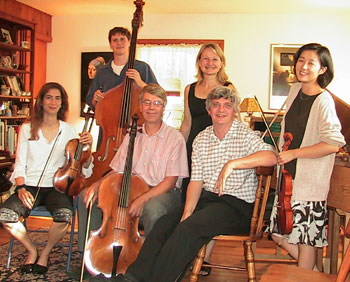
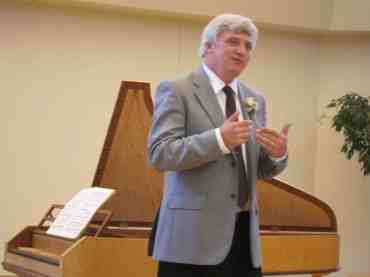
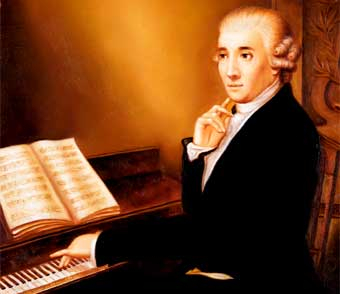

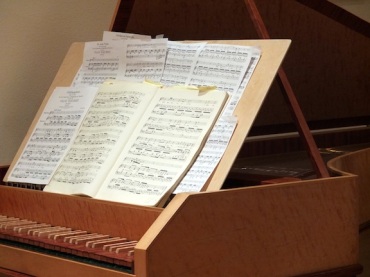
![Marc Vallon 2011 James Gill (baroque & modern)[2]](https://welltempered.files.wordpress.com/2012/03/marc-vallon-2011-james-gill-baroque-modern2.jpg?w=370&h=557)
